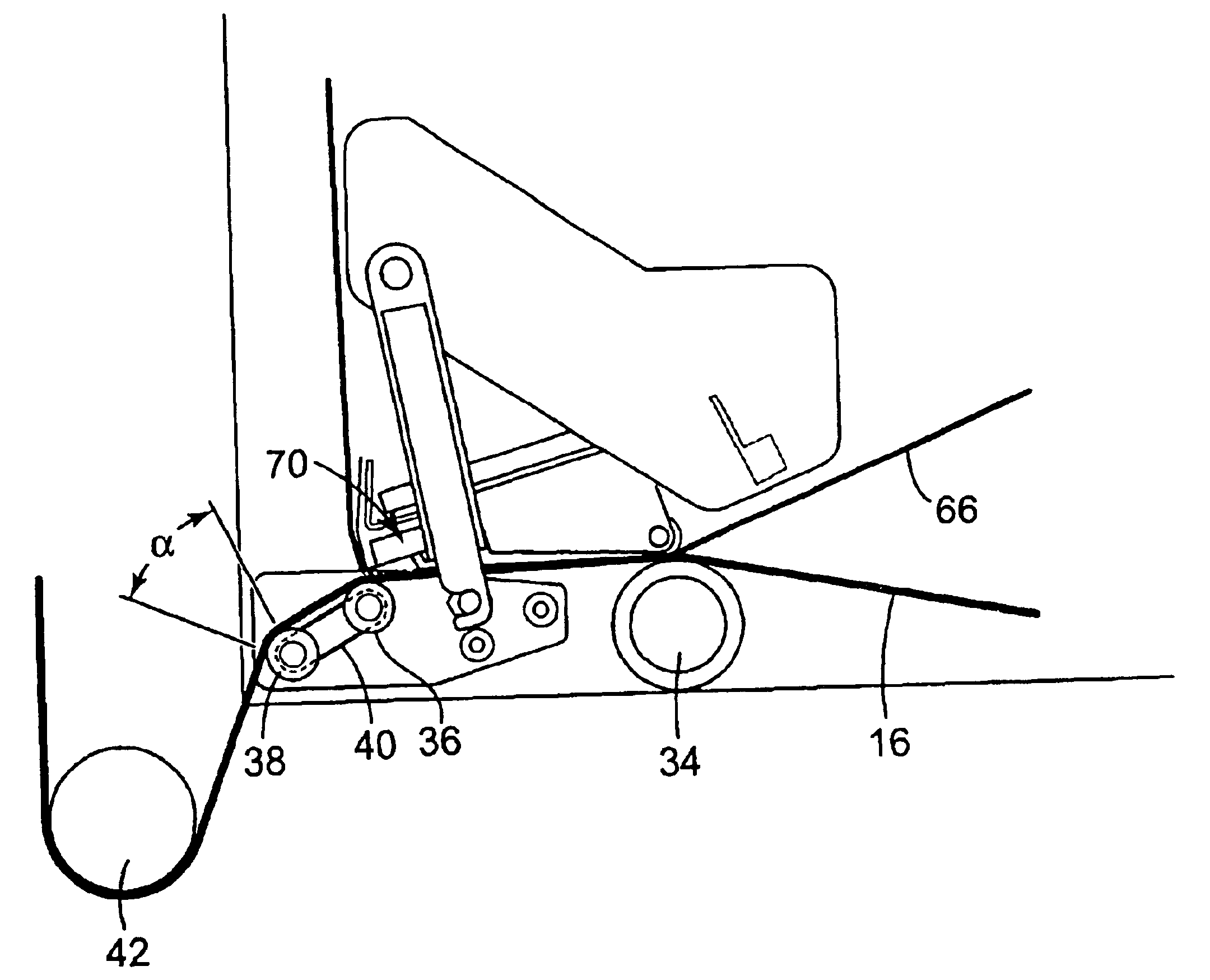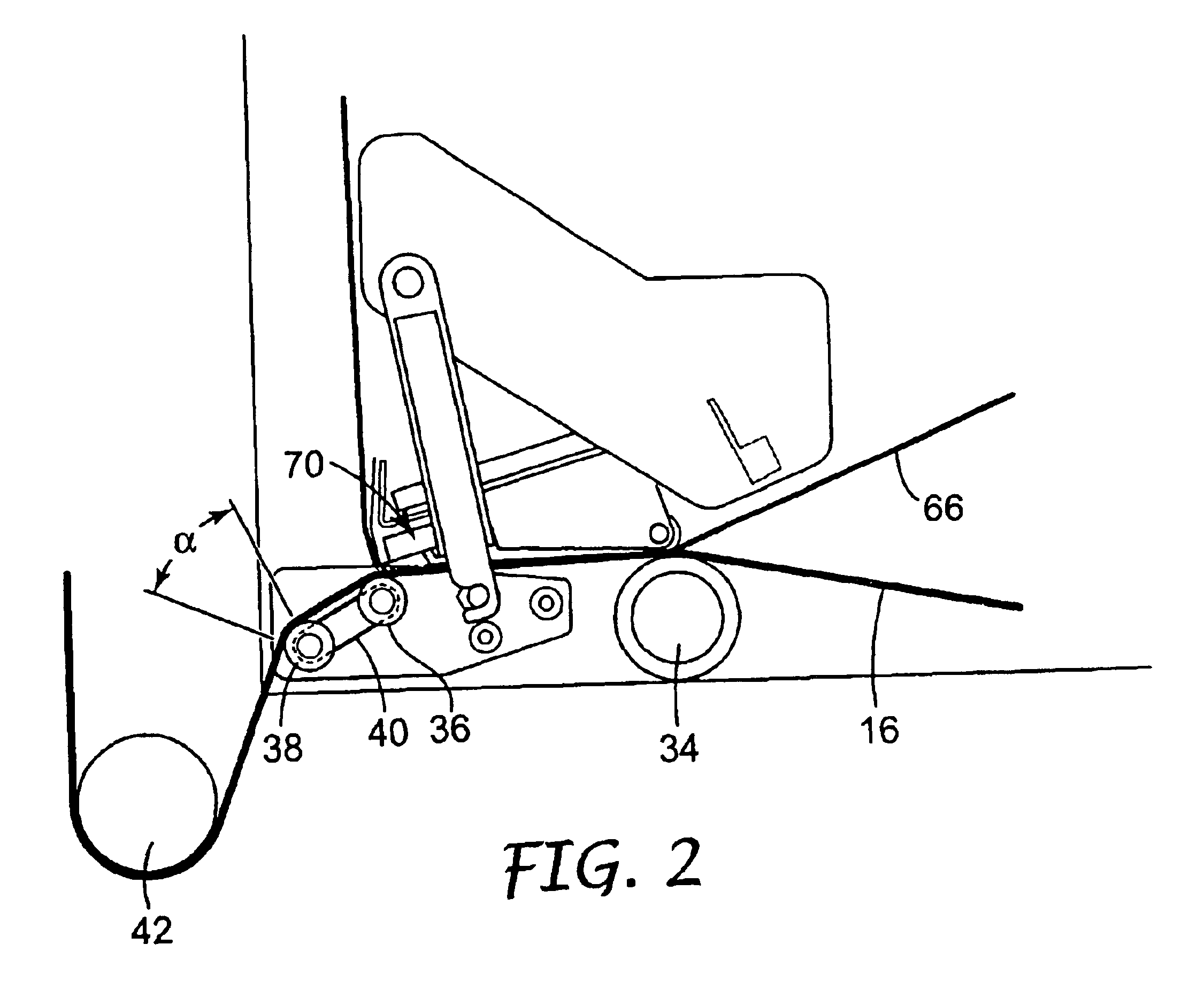Apparatus and method for handling linerless label tape
a linerless label and tape supply technology, applied in the field of linerless label tape system, can solve the problems of increasing the cost of liner material, and reducing the available length of label tape for a given tape supply roll diameter, so as to achieve the effect of minimizing adhesion
- Summary
- Abstract
- Description
- Claims
- Application Information
AI Technical Summary
Benefits of technology
Problems solved by technology
Method used
Image
Examples
Embodiment Construction
[0034]FIGS. 1 and 2 illustrate an apparatus 10 for printing on a continuous web of linerless tape for subsequent application to an article. FIGS. 3 and 4 illustrate an alternative apparatus 100 for printing on a continuous web of linerless tape for subsequent application to an article. The embodiments of the apparatus 10, 100 may be an apparatus for printing and applying tape, which prints information onto tape to form a length of printed tape and then applies the length of printed tape to an object, preferably a package or a box. The apparatus 10, 100 may vary the information printed on each length of printed tape and may vary the overall length of each length of printed tape, such that different lengths of printed tape may be produced from one supply roll of tape. The apparatus 10, 100 applies the length of printed tape onto an object or article, preferably a package or box, either while the package or box is stationary or while the box is moving (such as while the box is being cl...
PUM
| Property | Measurement | Unit |
|---|---|---|
| thickness | aaaaa | aaaaa |
| wrap angle | aaaaa | aaaaa |
| thicknesses | aaaaa | aaaaa |
Abstract
Description
Claims
Application Information
 Login to View More
Login to View More - R&D
- Intellectual Property
- Life Sciences
- Materials
- Tech Scout
- Unparalleled Data Quality
- Higher Quality Content
- 60% Fewer Hallucinations
Browse by: Latest US Patents, China's latest patents, Technical Efficacy Thesaurus, Application Domain, Technology Topic, Popular Technical Reports.
© 2025 PatSnap. All rights reserved.Legal|Privacy policy|Modern Slavery Act Transparency Statement|Sitemap|About US| Contact US: help@patsnap.com



